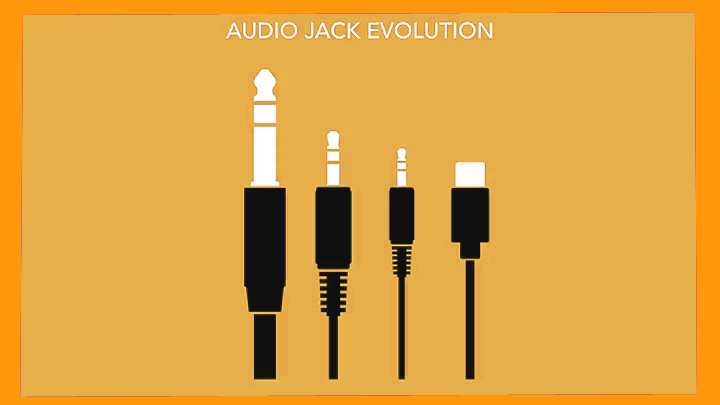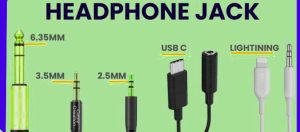

Here are the details of common headphone jack sizes:
- 3.5mm Jack (1/8 inch):
- Diameter: 3.5mm
- Also known as the standard audio jack.
- Widely used in smartphones, laptops, tablets, MP3 players, and other portable audio devices.
- Compatible with a wide range of headphones, earphones, and audio accessories.
- 2.5mm Jack (3/32 inch):
- Diameter: 2.5mm
- Less common than the 3.5mm jack.
- Previously used in older portable audio devices but has become less prevalent in recent years.
- Found in some niche applications and specific audio equipment.
- 6.35mm Jack (1/4 inch):
- Diameter: 6.35mm
- Commonly known as the quarter-inch jack.
- Used in professional audio equipment such as studio headphones, amplifiers, musical instruments, and audio interfaces.
- Provides robust connections and is capable of carrying both balanced and unbalanced signals.
- 4.4mm Jack:
- Diameter: 4.4mm
- Relatively newer addition, gaining popularity in high-end audio equipment.
- Offers improved sound quality and reduced crosstalk compared to the standard 3.5mm jack.
- Mainly used in premium headphones, portable audio players, and audio DACs (Digital-to-Analog Converters).
- USB-C and Lightning Connectors:
- Not traditional headphone jacks, but digital audio connectors.
- USB-C is commonly found in Android devices.
- Lightning connector is used in Apple devices.
- Supports digital audio transmission, allowing for high-resolution audio playback.
- Some smartphones and tablets have opted for these connectors instead of the traditional headphone jack for audio output.
These are the common headphone jack sizes with their respective details, each serving specific purposes and catering to different audio equipment and devices.
Here are the advantages and disadvantages of various headphone jack sizes, including 3.5mm, 2.5mm, 6.35mm, 4.4mm, and USB-C:
3.5mm Jack:
- Advantages:
- Widely compatible with a vast array of headphones, earphones, and audio accessories.
- Standardized size ensures widespread availability of compatible audio equipment.
- Provides a simple and reliable connection for audio output.
- Disadvantages:
- Limited in size, which may restrict the quality of audio output compared to larger jacks.
- Vulnerable to wear and tear over time, leading to issues such as loose connections or audio distortion.
2.5mm Jack:
- Advantages:
- Smaller size can be advantageous for portable devices with limited space.
- Suitable for specific niche applications and audio equipment.
- Disadvantages:
- Less common and may have limited compatibility with mainstream audio devices and accessories.
- Smaller size may result in less robust connections and reduced durability compared to larger jacks.
6.35mm Jack:
- Advantages:
- Robust construction suitable for professional audio equipment.
- Capable of carrying both balanced and unbalanced audio signals.
- Commonly used in studio headphones and high-end audio setups for improved sound quality.
- Disadvantages:
- Bulky size makes it less suitable for portable devices and on-the-go use.
- May require adapters or converters for compatibility with devices that only have smaller headphone jacks.
4.4mm Jack:
- Advantages:
- Offers improved sound quality and reduced crosstalk compared to 3.5mm jacks.
- Becoming increasingly popular in premium headphones and portable audio players for audiophile-grade audio playback.
- Supports high-resolution audio formats for enhanced listening experience.
- Disadvantages:
- However, due to its limited availability compared to the standard 3.5mm jack, there are fewer compatible devices and accessories.
- Higher cost associated with premium audio equipment featuring 4.4mm jacks.
USB-C:
- Advantages:
- With this advantage, transitioning from analog jacks to digital audio transmission can result in potentially higher-quality sound
- Can carry power and data alongside audio signals, enabling additional functionality.
- Becoming increasingly common in modern smartphones, laptops, and other devices.
- Disadvantages:
- Requires compatible headphones or adapters, which may not be readily available or may incur additional costs.
- Lack of standardization may lead to compatibility issues with certain devices or accessories.
- Digital audio processing may introduce latency or compatibility issues with some audio equipment.
Post Views: 26
